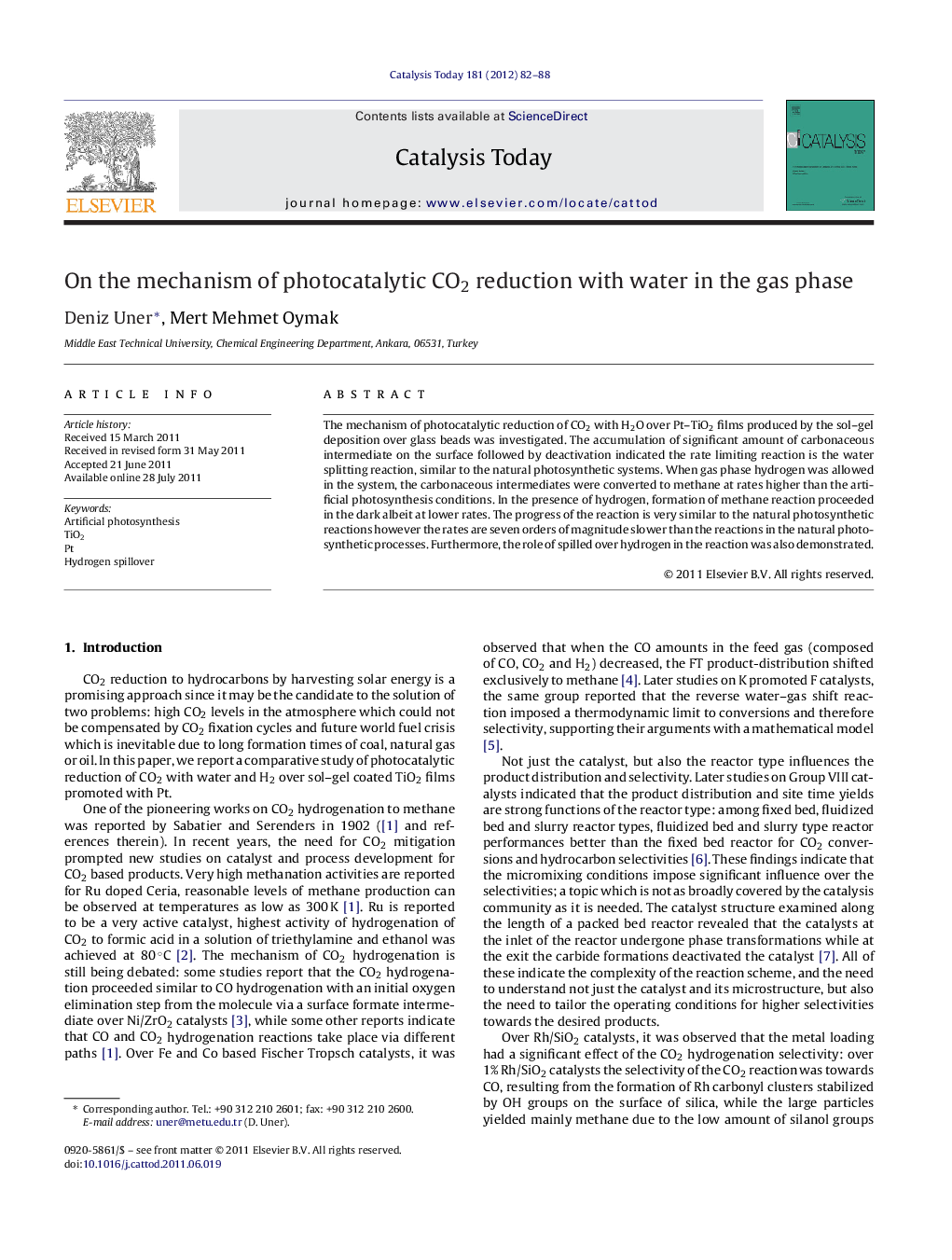| Article ID | Journal | Published Year | Pages | File Type |
|---|---|---|---|---|
| 55443 | Catalysis Today | 2012 | 7 Pages |
The mechanism of photocatalytic reduction of CO2 with H2O over Pt–TiO2 films produced by the sol–gel deposition over glass beads was investigated. The accumulation of significant amount of carbonaceous intermediate on the surface followed by deactivation indicated the rate limiting reaction is the water splitting reaction, similar to the natural photosynthetic systems. When gas phase hydrogen was allowed in the system, the carbonaceous intermediates were converted to methane at rates higher than the artificial photosynthesis conditions. In the presence of hydrogen, formation of methane reaction proceeded in the dark albeit at lower rates. The progress of the reaction is very similar to the natural photosynthetic reactions however the rates are seven orders of magnitude slower than the reactions in the natural photosynthetic processes. Furthermore, the role of spilled over hydrogen in the reaction was also demonstrated.
Graphical abstractFigure optionsDownload full-size imageDownload high-quality image (136 K)Download as PowerPoint slideHighlights► Photocatalytic CO2 reduction with water in gas phase follows a mechanism similar to the natural photosynthetic systems. ► CO2 adsorbs over TiO2 to form HCO3− intermediate. ► Hydrogen dissociated on Pt surface spills over to TiO2, reacts with this intermediate to form CH4. ► Adsorption and spillover are dark reactions which are facile at room temperature.
